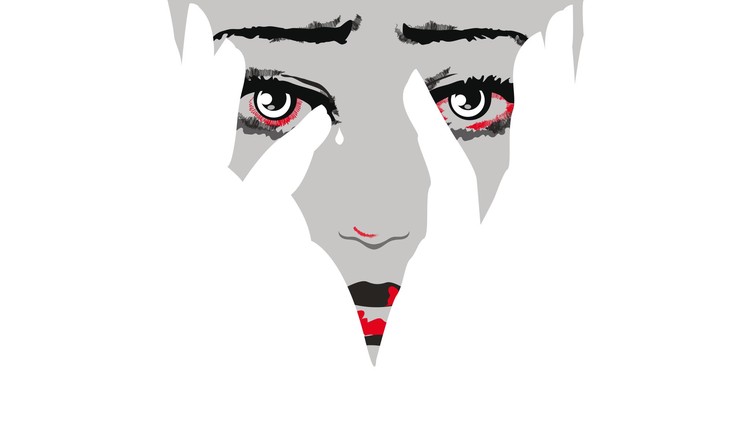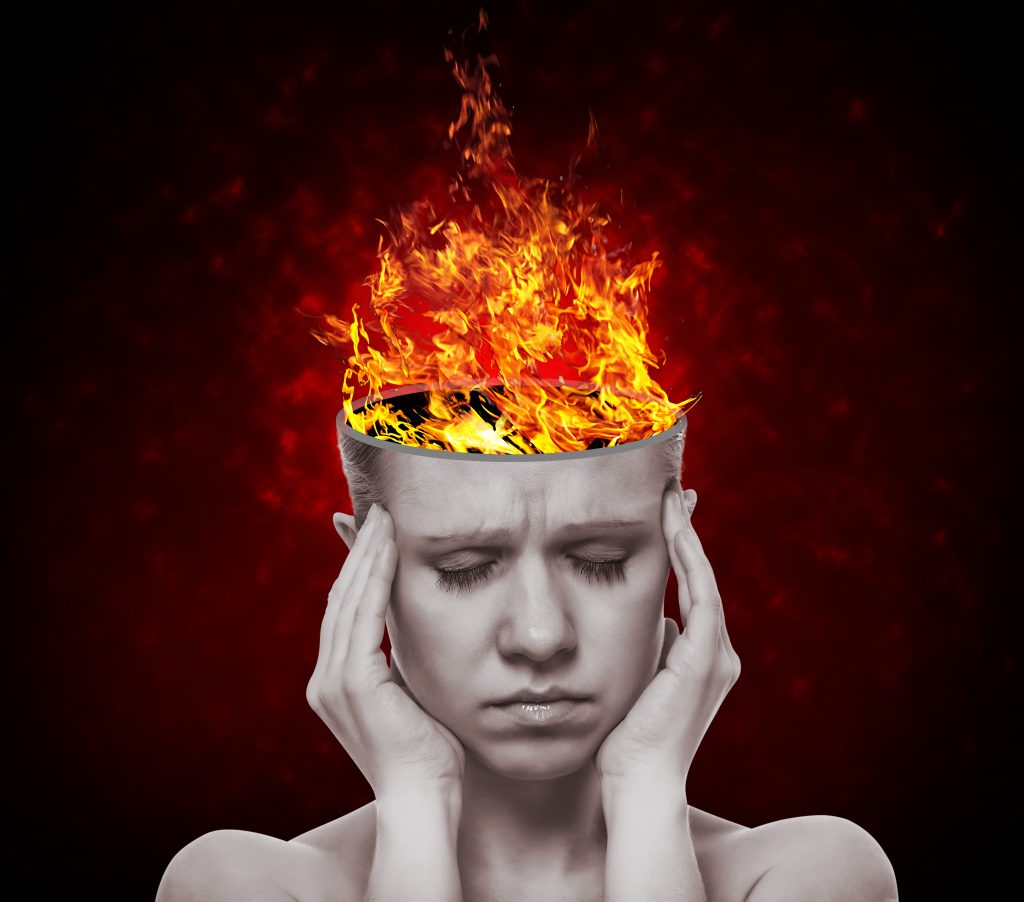In the field of “psychosis” it seems that many things are discovered, then forgotten again, and it is left to future generations to rediscover them.
Carl Jung, one of the founding fathers of modern psychology, had a lot of insights about so-called “schizophrenia” that our modern mental health system has failed to incorporate.
While Jung had his flaws, it really is amazing how much he managed to understand at a time when he had no access to the research that is currently available, nor access to anything like the consumer/survivor movement that has highlighted many important issues. I’m pasting in below most of an email written by Brian Koehler, where he first addresses the question of Jung’s degree of uncertainty about whether “schizophrenia” is ever “biological” and then where he which explores Jung’s thinking on a variety of related subjects. I thought it was worth sharing, and I thank Brian for giving his permission to share it here.
After our last email discussion in which I had noted that both Sullivan & Jung thought that there was a group of persons diagnosed with schizophrenia who may have an “organic” illness ( I would never make such a reductionistic differentiation-right from the start of life, the environment (mind) and genes/brain are co-actional, but Sullivan & Jung did not have the access to such research demonstrating the profound effects of the social-psychological environment on gene expression and neural morphology, etc.), you had disagreed and noted that Jung did not think this. Having taught the history of psychoanalysis and psychosis for decades, I still suspected what I said was correct. So, I checked with the original sources, and came across a passage in which, Jung does explicitly state this viewpoint. It is as follows:
After speaking of his using material from “milder, still fluid cases and of latent psychoses,” Jung (1958) noted: “Consequently, I must leave the possibility open that there may also be schizophrenia for which a psychogenic aetiology can be considered only in minimal degree or perhaps not at all” (p. 268).
This is from:
“Schizophrenia” in “The Psychogenesis of Mental Disease: Including ‘On Dementia Praecox’” by CG Jung published in 1960 by Princeton University Press (Bollingen Series XX).
I am taking this opportunity to post something on Jung and psychosis, I sent to the ISPS listserv many years ago.
One night while taking a boat trip in Norway with Gaetano Benedetti, Julie Kipp and I had the pleasure of listening to stories about his experiences at the Burghölzli clinic in Switzerland. One of the stories had to do with his experiences of Carl Jung in a clinical seminar. Professor Benedetti recounted cases that Jung presented in that seminar. I was intrigued by what I heard. For several reasons I have maintained an ambivalent relationship to Jung as a person and some of his theories.I am currently exploring what is known about his relationship to the Nazis and Sabina Spielrein in Deirdre Bair’s (2003) volume, “Jung: A Biography.” However, he was one of the early psychotherapists of psychotic individuals. His writings on the subject have impressed me.
Jung worked at the Burghölzli clinic from 1900 to 1909. He was also a lecturer in psychiatry at the University of Zurich. Jung worked under Eugen Bleuler who introduced the term schizophrenia as a replacement for the concept of dementia praecox. In 1907 he drew an association between the content of dreams (for which he used a process he called amplification) and the content of hallucinations and delusions. He utilized Freud’s theories to help understand what on the surface seemed incomprehensible. For Jung, it was the feeling-toned complex, not the dream, which was the royal road to the unconscious. Similar to the postmodern views of a multiplicity of selves, Jung saw the individual as being made up of many selves, which are autonomous and therefore we cannot assume the unity of consciousness or the primacy of will. Jung relates complexes and psychosis, with a view of the latter as a type of waking dream:
“A person with a strong complex thinks in terms of the complex, he dreams with open eyes and no longer adapts psychologically to the environment” (Jung 1907).
“…in schizophrenia the complexes have become disconnected and autonomous fragments, which either do not reintegrate back to the psychic totality, or, in the case of a remission, are unexpectedly joined together again as if nothing happened” (1939).
Jung believed that such mental states as paranoia could not be accounted for as neuropathology. In 1914 he noted:
“I incline to the view that, on the basis of a disposition whose nature is at present unknown to us, an unadapted psychological function arises which may develop into a manifest mental disturbance and secondarily induce symptoms of organic degeneration.”
This latter viewpoint is remarkably consistent with our current understanding of the pervasive effects of profound anxiety/stress on CNS structure and function. Jung accused psychiatry of reductionistic materialism, i.e., placing the organ of the brain above its functions.
Jung, in his collection of detailed patient histories, discovered that the schizophrenic illness often occurred within the context of significant trauma [see the work of John Read]. Like Sullivan, Jung saw psychosis as on a continuum with everyday experience:
“When we penetrate into the human secrets of our patients, the madness discloses the system upon which it is based, and we recognize insanity to be simply an unusual reaction [also similar to Adolf Meyer’s psychobiological perspective] to emotional problems which are in no wise foreign to ourselves” (1914).
Jung believed that once we understood the ‘code’ of psychotic communication we may then be able to put together the chain of events that led to the emergence of a psychotic episode. In regard to the ‘stuckness’ of the psychotic solution, Jung suggested:
“Why is the mind compelled to expend itself in the elaboration of pathological nonsense? Our new method of approach gives us a clue to this difficult question. Today we can assert that the pathological ideas dominate the interests of the patient so completely because they are derived from the most important questions that occupied him when he was normal. In other words, what in insanity is now an incomprehensible jumble of symptoms was once a vital field of interest to the normal personality” (1914).
Jung believed that the principal function of the unconscious is to effect compensation and bring about balance.:
“The mentally unbalanced person tries to defend himself against his own unconscious, that is to say, he fights against his own compensating influences” (1914).
For Jung, the psychotic person has fought for many years in order to preserve ego functioning-he is overwhelmed by strong unconscious forces:
“These forces did not originate in our patient out of nowhere. They are most emphatically not the result of poisoned brain cells, but are normal constituents of our unconscious psyche. They appeared in numberless dreams, in the same or a similar form, at a time of life when seemingly nothing was wrong. And they appear in dreams of normal people who never get anywhere near a psychosis” (1939)..
In 1909, Jung moved into private practice. Later he noted: “In psychotherapy, enthusiasm is the servant of success” (1939). Towards the end of his life, Jung believed that if patients were treated only with pharmacological agents, to leave their internal life unanalyzed was to leave patients with little means of being able to take care of themselves in their everyday lives. Jung noted that it was his work with one patient, referred to as Babette S. that he first came to understand the language of schizophrenia.
“More than once I have seen that even with such patients there remains in the background a personality which must be called normal [Freud, Katan, Bion and many other psychoanalysts held this viewpoint]. It stands looking on, so to speak…Through my work with patients I realized that paranoid ideas and hallucinations contain a gem of meaning” (1995).In 1958, Jung commented on his life-long experience:
“It is now just about fifty years since I became convinced, through practical experience, that schizophrenic disturbances could be treated and cured by psychological means. I found that, with respect to the treatment, the schizophrenic patient behaves no differently from the neurotic. He has the same complexes, the same insights and needs, but not the same certainty with regard to his foundations. Whereas the neurotic can rely instinctively on his personality dissociation never losing its systematic character, so that the unity and inner cohesion of the whole are never seriously jeopardized, the latent schizophrenic must always reckon with the possibility that his very foundations will give way somewhere, that an irretrievable disintegration will set in, that his ideas and concepts will lose their cohesion and their connection with other spheres of association and with the environment. as a result, he feels threatened by an uncontrollable chaos of chance happenings. He stands on treacherous ground, and very often he knows it. The dangerousness of his situation often shows itself in terrifying dreams of cosmic catastrophes [see the work of Marvin Hurvich on annihilation anxiety], of the end of the world and such things. Or the ground he stands on begins to heave, the walls bend and bulge, the solid earth turns to water, a storm carries him up into the air, all his relatives are dead, etc. These images bear witness to a fundamental disturbance of relationship, that is, of the patient’s rapport with his surroundings, and graphically illustrate the isolation that menaces him” (pp. 258-259).Jung, after many years of clinical experience concluded:
“I have now, after long practical experience, come to hold the view that the psychogenic causation of the disease [the schizophrenias] is more probable than the toxic [physico-chemical] causation. There are a number of mild and ephemeral but manifestly schizophrenic illnesses-quite apart from the even more common latent psychoses-which begin purely psychogenically, run an equally psychological course (aside from certain presumably toxic nuances) and can be completely cured by a purely psychotherapeutic procedure. I have seen this even in severe cases” (p. 264).
In regard to the latter (i.e., severe cases), Jung stated: “It would be a mistake to suppose that more or less suitable methods of treatment exist. Theoretical assumptions in this respect count for next to nothing. Also, one would do well not to speak of ‘methods’ at all. The thing that really matters is the personal commitment, the serious purpose, the devotion, indeed the self-sacrifice, of those who give the treatment. I have seen results that were truly miraculous, as when sympathetic nurses and laymen were able, by their courage and steady devotion, to re-establish psychic rapport with their patients and so achieve quite astounding cures” (p.265).
Jung then addresses certain countertransference issues:
“But even so one can bring about noticeable improvements in severe schizophrenics, and even cure them, by psychological treatment, provided that one’s own constitution holds out [in my own experience, I have had situations where I continued the long-term psychotherapy of several patients in inpatient state hospital settings, later transferred into my practice, in which I was physically attacked, reported to have sexually molested the patient , etc, to very positive outcomes, e.g., to the point where family thought their family member was originally misdiagnosed as schizophrenic, never having to return to the state hospital after many years of residing there, etc]. This question is very much to the point, because the treatment not only demands uncommon efforts but may also induce psychic infections in a therapist who himself has a rather unstable disposition. I have seen no less than three cases of induced psychoses in treatments of this kind” (pp. 265-266).Jung took the position, as I and many of my colleagues in ISPS have, that schizophrenia is primarily an affective illness with secondary cognitive sequelae.Jung noted:
“Here we are faced with a dilemma: are we to assume, as a causal factor, a weakness of the ego-personality, or a particularly strong affect? I regard the latter hypothesis as the more promising, and for the following reason. The notorious weakness of ego-consciousness in the sleeping state means next to nothing so far as a psychological understanding of the dream-contents is concerned. It is the feeling-toned complex that determines the meaning of the dream., both dynamically and also as regards its content. We must undoubtedly apply this criterion to schizophrenia, for, so far as we can see at present, the whole phenomenology of this disease turns on the pathogenic complex. In our attempts at explanation we shall probably do best if we start from this point and regard the weakening of the ego-personality as secondary, as one of the destructive concomitants of a feeling-toned complex which arose under normal conditions [in regard to my own clinical experience and the research of John Read and other colleagues, I would disagree with Jung on this-traumatic events, strain
trauma, emotional neglect and an emotional disconnection are often seen in the histories of persons later diagnosed with schizophrenia] but afterwards shattered the unity of the personality by its intensity” (p. 269).I will end this posting on a quote from Jung (1995) in regard to the therapeutic relationship:
“For psychotherapy to be effective, a close rapport is needed, so close that the doctor cannot shut his eyes to the heights and depths of human suffering. This rapport consists, after all, in a constant comparison and mutual comprehension, in the dialectical confrontation of two opposing psychic realities. If for some reason their mutual impressions do not impinge on each other, the psychotherapeutic process remains ineffective, and no change is produced. Unless both doctor and patient become a problem for each other, no solution is found” (p. 166).References
Bair, D. (2003). Jung: A Biography. NY: Little, Brown and Company.
Jameson, T. (2003). Psychodynamic aspects of collaborative care. In Sue Kerr (Ed.), Schizophrenia: Aspects of Care. London: Whurr Publishers
Jung CG (1914). The content of the psychoses.In The Psychogenesis of Mental Disease (1960), Collected Works, Volume 3. Princeton University Press.
Jung CG (1939). On the psychogenesis of schizophrenia. In The Psychogenesis of Mental Disease (1960), Collected Works, Volume 3. Princeton University Press.
Jung CG (1958). Schizophrenia. In The Psychogenesis of Mental Disease (1960), Collected Works, Volume 3. Princeton University Press.
Jung CG (1995). Memories, Dreams, Reflections. London: Fontana.




Could someone explain the last paragraph, particularly the last line?
“Unless both doctor and patient become a problem for each other, no solution is found”.
Thanks.
The last line refers to the transference between the analyst and patient. The transcendent function is a union conscious and unconscious. Both the patient and analyst have an unconscious which represents the unknown both within and without the individual. Only a wounded man or woman can be a healer. The therapist has to show he or she is flawed and human otherwise there will be no real long term influence of the therapist who wears a mask of perfection on the patient. Without knowledge of the shadow the therapist will always feel superior and the patient inferior. There is no human connection. The therapist can be wrong. Polarization and opposition result in the both patient and therapist being out of balance. A union of these results in a unique third thing like the mixing of chemical substances, both are changed.
In other words, the therapist and the patient must be considered equals on a journey of self discovery. There is always more unconscious to go even with the therapist who can learn something from the patient who often can intuitively sense the therapists vices etc. In other words, the therapist has to show weakness, if not then then he cannot influence the patient who senses the hypocrisy of the patient. This was the problem of Freud who forced everything into his sexual repression or trauma theory, not Jung who had a view which also included positive, creative view of the psyche.
excuse me: this is the correct idea: the therapist has to show weakness, if not then then he cannot influence the patient who senses the hypocrisy of the therapist. The analysist does know more about the principles of introspection and the unconscious psyche than the patient but can always learn something new since he analyzes himself through his patient.
Hi Geoffrey, thanks for catching the fact that no one had ever offered an answer to Rob’s question! I agree with your perspective, about the importance the the therapist coming across as human, with his/her own weaknesses and flaws.
There may also be more to what Jung meant, but I’m no expert on his thought, so that might just be a point for further reflection.
Jung was excellent at structuring his arguements in a way that compacts a large amount of information into a brief passage, it’s possible that it seems this way due to ambiguity, however I think it is much more likely that Jung was attempting to describe a new concept with old words that contain hold meanings. To understand what Jung meant by “Unless both doctor and patient become a problem for each other, no solution is found” it is important that the context surrounding the statement is kept in mind. When Jung states that “For psychotherapy to be effective, a close rapport is needed, so close that the doctor cannot shut his eyes to the heights and depths of human suffering” he is stating that the doctor must reach the depths of suffering of the patient before he can understand it and therefore cure it.
“Similar to the postmodern views of a multiplicity of selves, Jung saw the individual as being made up of many selves, which are autonomous and therefore we cannot assume the unity of consciousness or the primacy of will.” Could you explain this? We cannot assume primacy of will in that we are designated by what is fluctuating and deterministic? Would a “unity of consciousness” mean something different than a ‘totality of consciousness’, because Jung writes often about totality of self, and totality of the psyche.